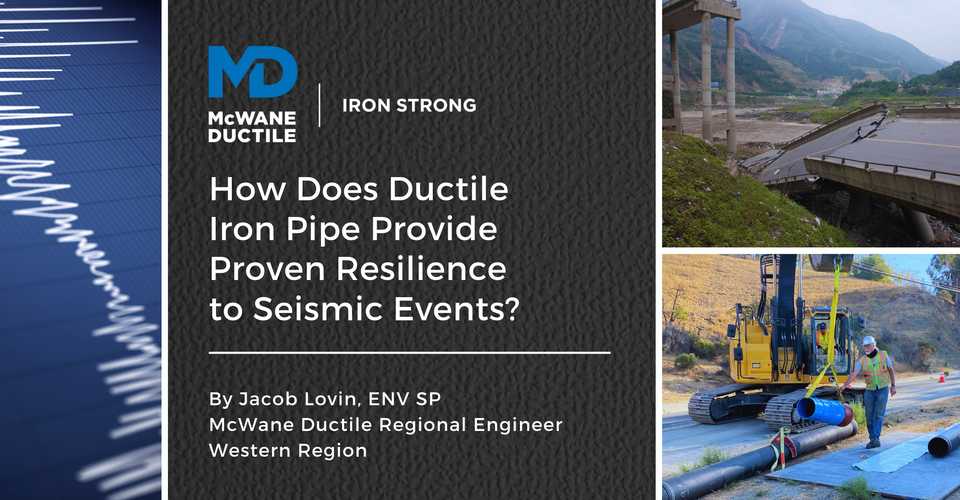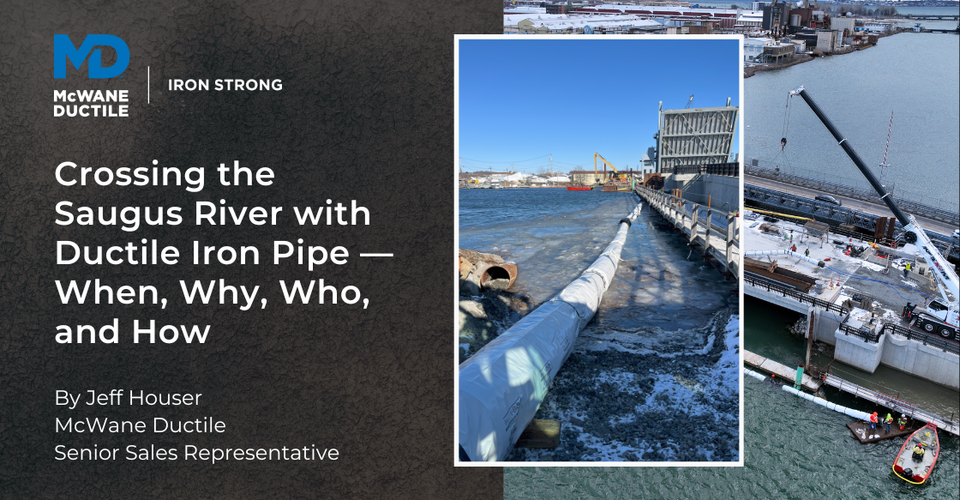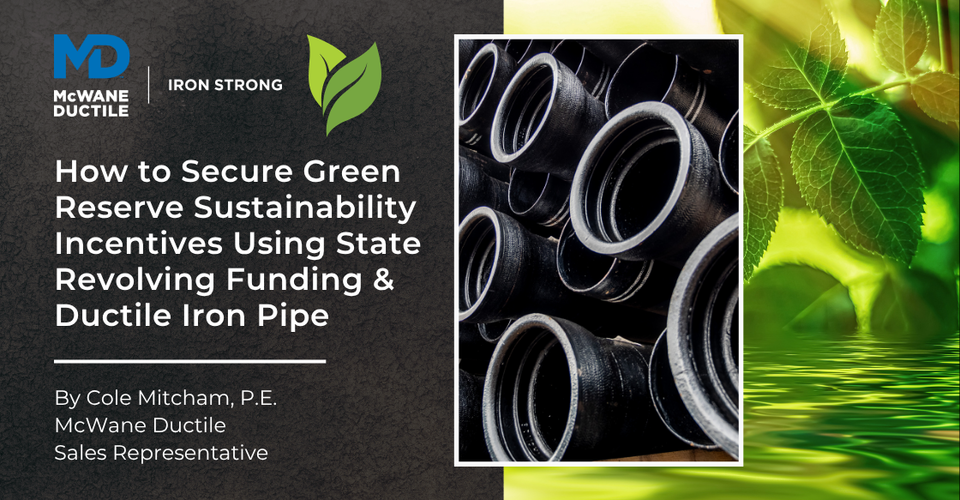-
How Does Ductile Iron Pipe Provide Proven Resilience to Seismic Events?
09/04/2025 In Products Resiliency TechnicalIn regions prone to seismic activity, the resilience of critical infrastructure plays a pivotal role in public safety. Among essential systems, water distribution networks are particularly vulnerable during catastrophic earthquakes, where ground movement and soil liquefaction can cause widespread pipe failure. Ductile iron pipe (DI pipe), however, has emerged as a highly reliable material due to its superior properties, joint flexibility, and proven performance in past seismic events. This #IronStrong Blog examines how the unique design and strength characteristics of DI pipes contribute to their remarkable ability to withstand the intense stresses of major earthquakes, ensuring continuity of service when it is needed most.
-
Crossing the Saugus River with Ductile Iron Pipe - When, Why, Who, and How
04/15/2025 In Installation Products TechnicalOver the course of my 30+ year career with McWane Ductile, I’ve had the opportunity to be a part of some remarkably interesting and detailed water pipeline projects. Several of these projects have required a partnership between the community, awarding authority, contractor, water works distributor, and material manufacturer to ensure the projects were installed efficiently and correctly. However, few have matched the scale, complexity, and collaborative effort of the Saugus River crossing—part of the massive Belden Bly Bridge Replacement Project in Massachusetts. This project stands out not only for its technical challenges but also for the preparation, planning, and collaboration of key partners that brought it to a successful conclusion. In this #IronStrong Blog, you’ll hear the when, why, who, and how of this complex and intricate Ductile iron pipe (DI pipe) waterway crossing.
Latest Posts
- Developing an Asset Management Plan for Your Future Utility or Engineering Organization 12/04/2025 In Comparisons Industry
- Can Joining Water Works Industry Organizations Help You Grow Professionally? 10/21/2025 In Careers WaterWorks
- How Does Ductile Iron Pipe Provide Proven Resilience to Seismic Events? 09/04/2025 In Products Resiliency Technical
- How to Secure Green Reserve Sustainability Incentives Using State Revolving Funding & Ductile Iron Pipe 07/29/2025 In Energy Products Technical






